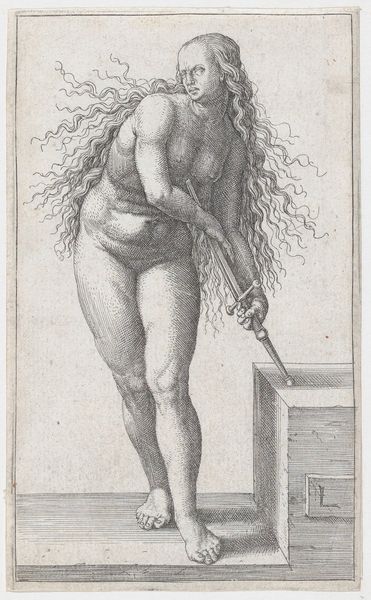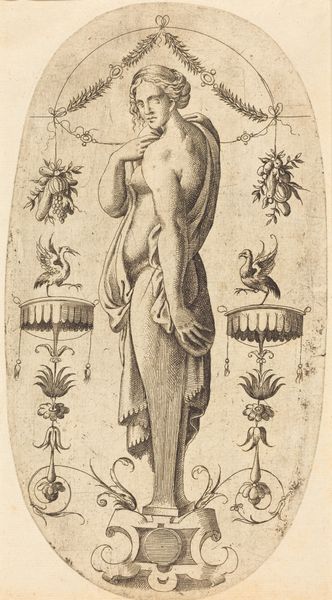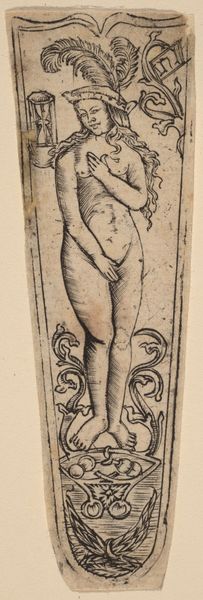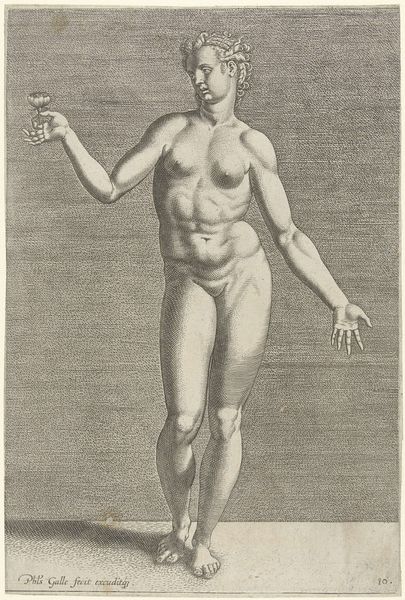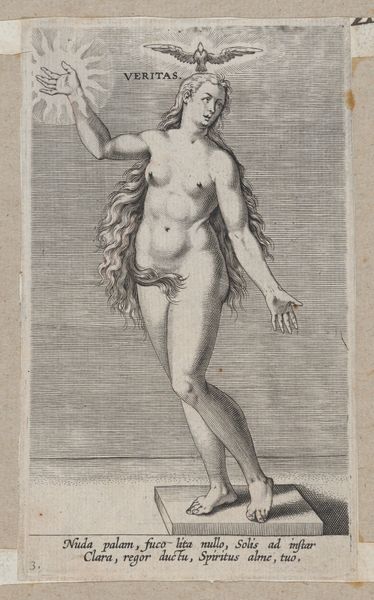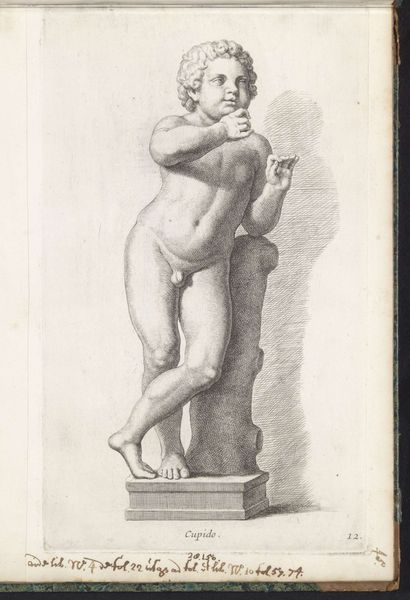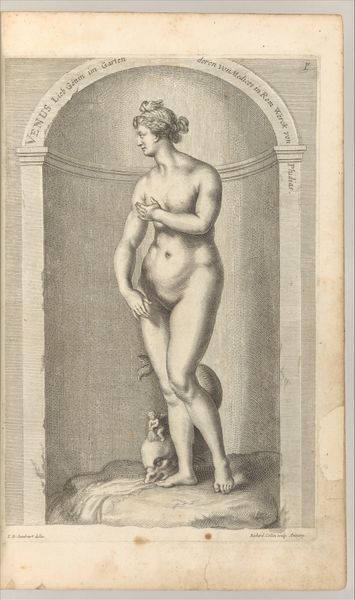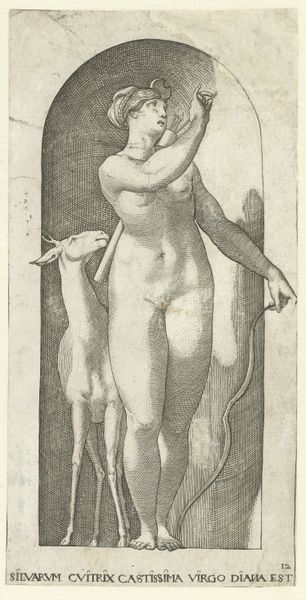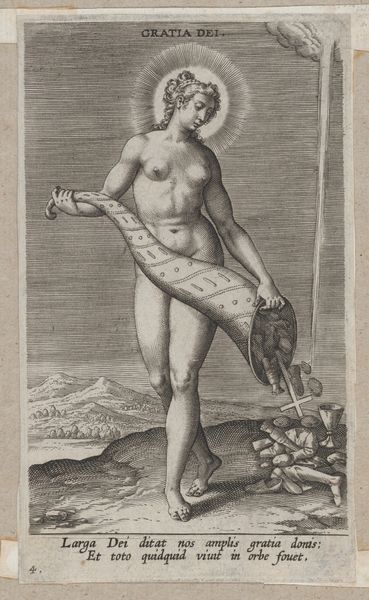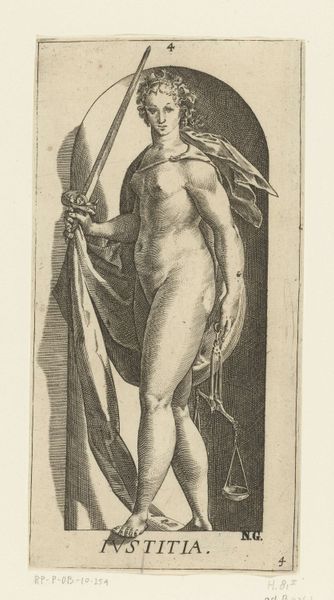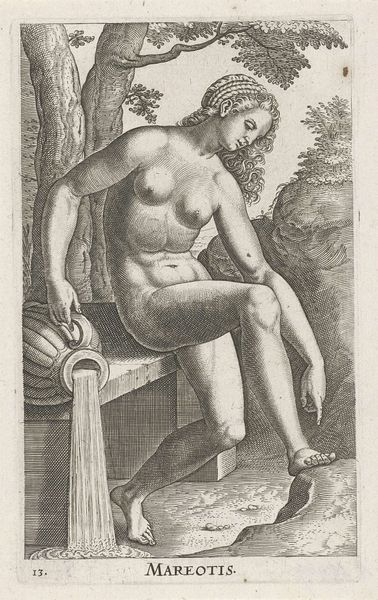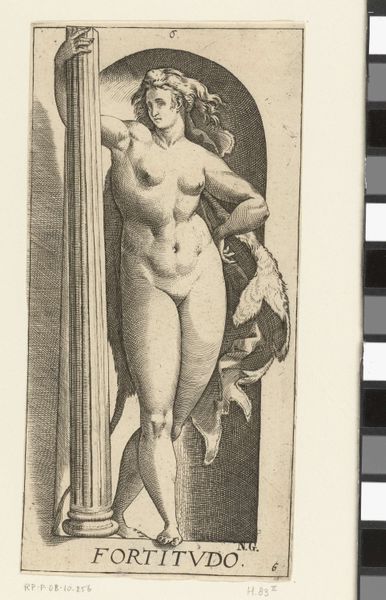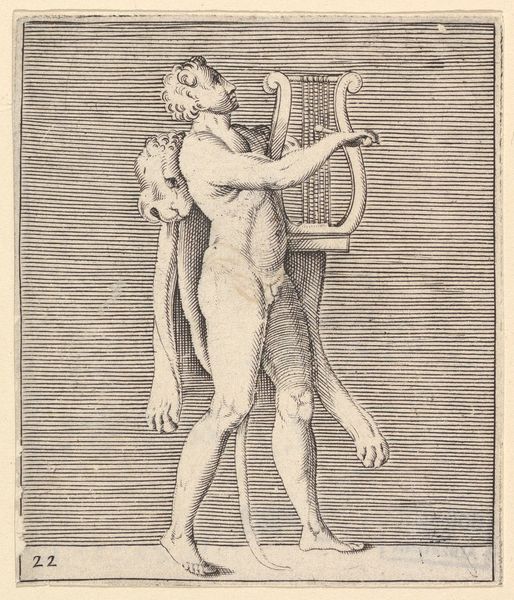
Card Number 8, cut-out from banner advertising the Opera Gloves series (G29) for Allen & Ginter Cigarettes 1885 - 1895
0:00
0:00
Dimensions: Sheet: 3 1/8 x 1 3/4 in. (8 x 4.5 cm)
Copyright: Public Domain
Curator: We're looking at Card Number 8, a cut-out from a banner advertising the Opera Gloves series for Allen & Ginter Cigarettes. It's believed to have been made between 1885 and 1895. Editor: It’s quite striking. I immediately notice this almost eerie, melancholic feeling. A gloved hand holds a portrait – is that what you see? There is a dreamlike feel and I am a little put off by the rendering of the glove: an industrial-looking grayish green with cutouts at the palm? It also reminds me of those old botanical drawings… Curator: A dreamlike, perhaps an unreal presentation, I agree. Formally, the artist is playing with scale and framing. Note the crisp miniature portrait nested within the larger gloved hand, all encased by this beaded border. There’s a deliberate flattening of perspective, reminiscent of ukiyo-e prints, that directs our attention to the interplay of shapes and the surface texture. Editor: The suggestion of Ukiyo-e hints at Japonisme, that certainly dominated the period and reveals complex politics of orientalism and trade…I find myself questioning the intended audience. Who were they and what message were they meant to receive from an image combining fashion, art, and consumerism? Was it about aspiration, elegance, the allure of the opera? I am struck by this almost postmodern quality with the portrait within the advertising card – there is something almost referential and self-aware. Curator: Intriguing point. Certainly, Allen & Ginter were savvy marketers. And I’d point out how the numbered cards tap into an early form of collecting culture, driving sales through serialized imagery. Looking at the colors, note the complementary palette – the olive green of the glove offset by the rose in the portrait and trim. It’s a carefully constructed visual experience. Editor: I agree on the market strategy—though I feel these images should give rise to critical awareness of turn of the century advertisement ploys! The gloves themselves hint at societal restrictions and norms for women: how to accessorize and protect—and is it a class indicator? Thinking more about this woman's demure expression as the focal point within this unusual framing, I see someone positioned by many forces and objectified by this advertising mechanism. It raises questions about power dynamics and societal expectations surrounding femininity during that era. Curator: I’m inclined to see that tension – there’s this fascinating formal arrangement; color and composition as well. Editor: The composition definitely has far reaching implications that resonate to the present day.
Comments
No comments
Be the first to comment and join the conversation on the ultimate creative platform.
